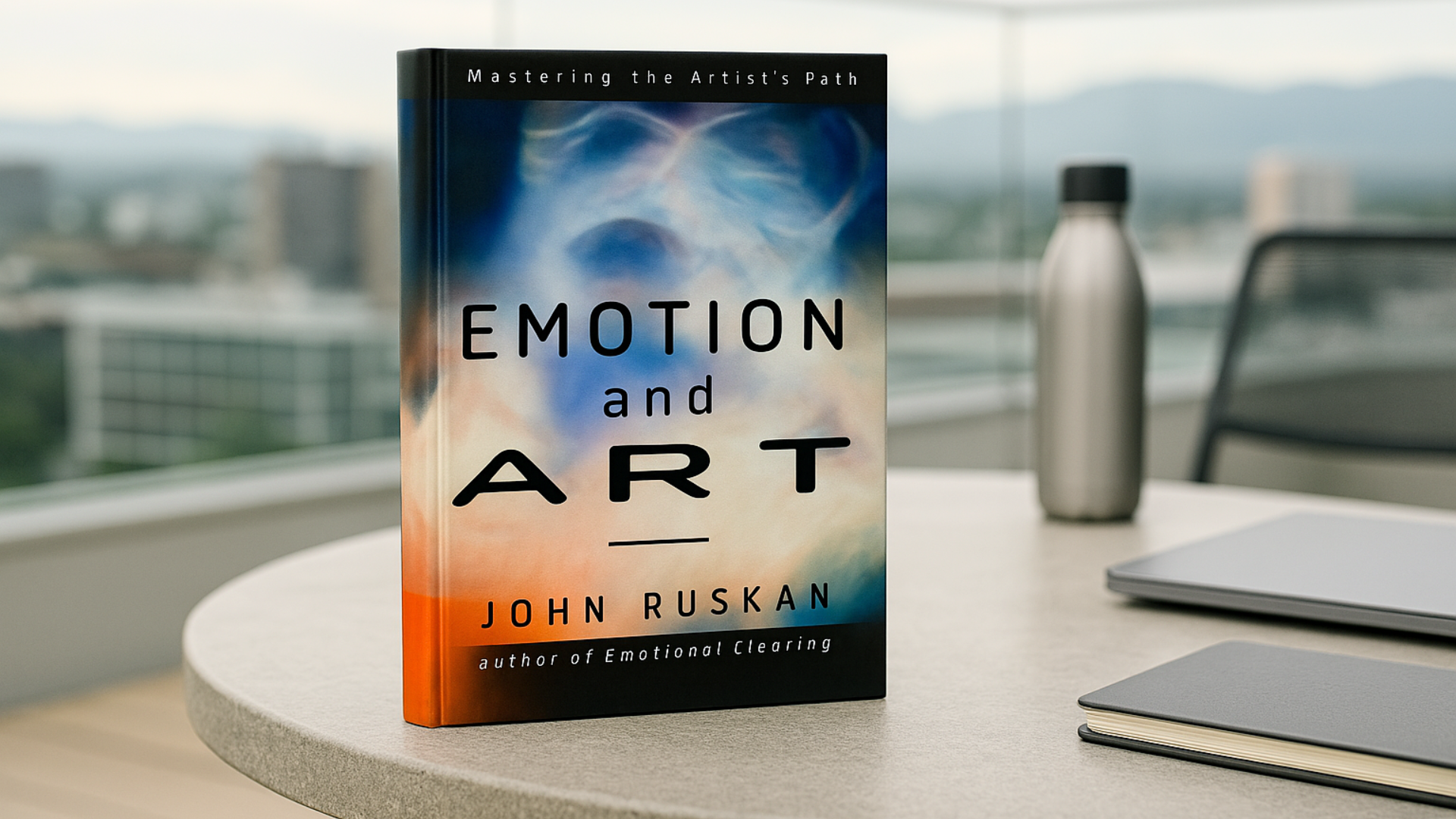What Emotion and Art Teaches About Creative Self-Trust

Book Review: Emotion and Art by John Ruskan
A contemplative guide to reclaiming art as a vehicle for emotional healing and inner integration
In Emotion and Art, John Ruskan invites readers to see creativity not as performance, but as an emotional and spiritual practice. This is a book that asks the artist to go inward, to examine how feelings move through the body and into creative work. It is not about producing masterpieces. It is about meeting your emotions with compassion, and allowing art to become a process of emotional integration.
Ruskan writes from a place of lived insight. Drawing from his experiences in both creative work and emotional healing, he offers a perspective that gently challenges the way many of us approach art. He reminds us that creativity is not about striving. It is about surrender.
What the book promises
The book promises to help artists and creatives understand their emotional blocks and transform them through the process of making art. Ruskan offers a framework for seeing art not just as self-expression, but as a path toward psychological and emotional clarity.
Rather than offering technical exercises or aesthetic instruction, the book centres on the idea that art can serve as a form of inner work. It promises to reconnect the reader with their emotional life, and to use that connection as a wellspring for creative energy.
What the book delivers
Emotion and Art unfolds in three major parts. The first introduces how perception opens the artist to feeling. The second focuses on how the act of making reveals what has been repressed or avoided. The third explores the inner world of the artist, including fear, resistance, and the complexity of self-worth. These sections build gradually, creating a sense of movement from awareness to expression to transformation.
Ruskan shares from his own story, which includes early creative frustration, spiritual seeking, and the discovery of emotional release work. His experiences are not presented as universal truths, but as an offering. Readers are encouraged to take what resonates and leave the rest.
What emerges is a quiet, grounded philosophy. Ruskan does not promise quick results. Instead, he advocates for presence, patience, and deep inner listening. He makes space for sadness, anger, confusion, and longing. These are not seen as obstacles to creativity. They are the raw material.
Style and structure
The writing is meditative and deliberate. Ruskan’s tone is calm and reflective. He avoids jargon, yet his concepts are layered. The pacing is unhurried, and the language encourages the reader to slow down and consider what is being said. At times, the prose feels like a guided reflection. This matches the subject matter well.
The structure is loosely organised around themes. While there are headings and divisions, the text often returns to core ideas in a spiral pattern. Readers may find themselves rereading certain sections, not because they are unclear, but because they are worth lingering with. The repetition helps reinforce the emotional tone of the work.
This is not a workbook or a step-by-step guide. It is more like a companion for introspective reading. Those seeking quick takeaways or external validation may not find what they are looking for here. Those seeking insight, however, will find it generously offered.
Where the book shines
Ruskan excels in creating emotional safety. He speaks to the inner critic, the fear of failure, the desire to be seen, and the impulse to hide. He offers an alternative to pushing through or powering over these feelings. Instead, he teaches how to be with them. That alone may be transformative for many readers.
One of the most powerful ideas in the book is the use of the right brain in artistic work. Ruskan explains that the right brain is not concerned with judgement or control. It is the part of us that feels and responds. By shifting into this space, the artist can bypass the mental loops of perfectionism and allow something more honest to emerge.
The book also shines in its treatment of suppressed emotion. Ruskan does not present emotional release as dramatic or chaotic. He frames it as a gentle unfolding. This is especially meaningful for readers who have been taught to distrust or devalue their emotional responses.
Light limitations
Because the book is intentionally reflective, some readers may find the structure too open. It does not follow a linear arc, and there are no worksheets or exercises. Those who benefit from clearly defined prompts or frameworks may wish for more direction. However, this openness is also what makes the book spacious and adaptable.
Ruskan writes from his own path, which includes specific spiritual and psychological practices. While his voice is inclusive, the framework is based primarily on his personal lens. Readers from different traditions or identities may need to translate some of the concepts to fit their own experience.
The tone is also very gentle, which may feel slow or repetitive to readers accustomed to more assertive or action-oriented creative guides. The invitation here is not to do more. It is to feel more. That shift in tone may take some adjustment.
Final thoughts
Emotion and Art is not a loud book. It does not demand. It invites. John Ruskan offers something that many creatives need but rarely receive: permission to feel fully, to make without pressure, and to trust that art can lead us back to ourselves.
For readers who are seeking a softer, more spiritually aware approach to creative life, this book will feel like a welcome companion. It does not promise to fix or to finish. It offers a path inward. Not as an escape, but as a way of remembering what matters.
Highly recommended for artists, facilitators, and seekers who want to bring more emotional honesty into their work.